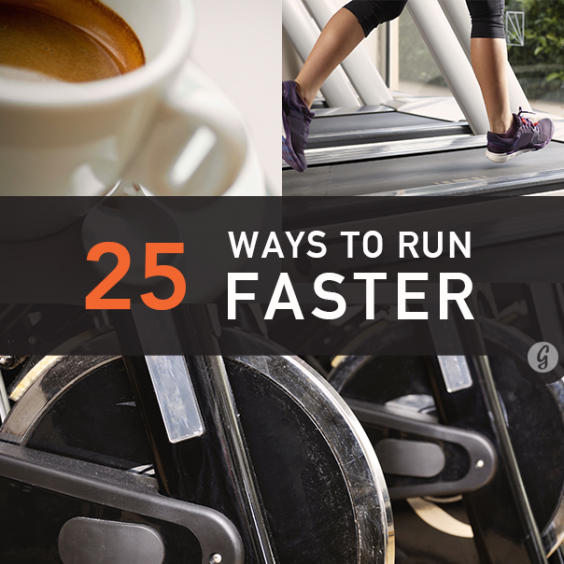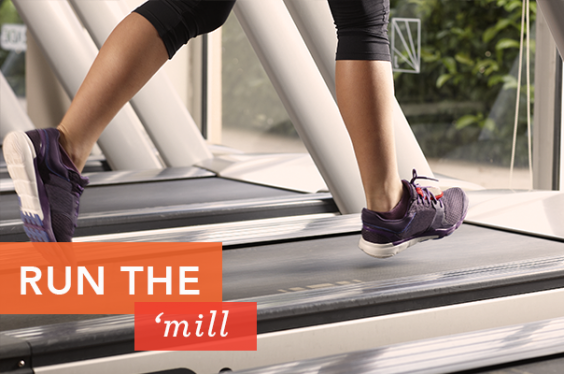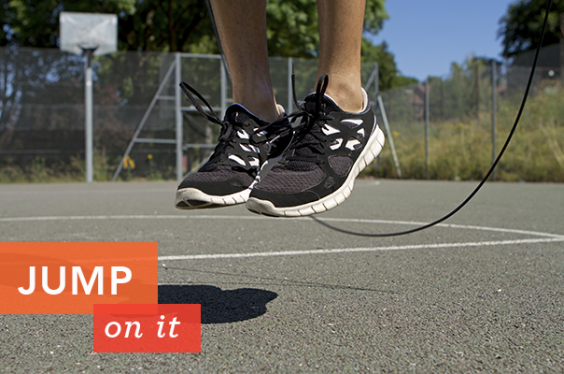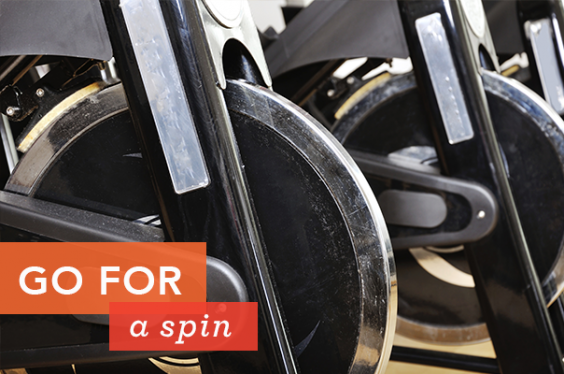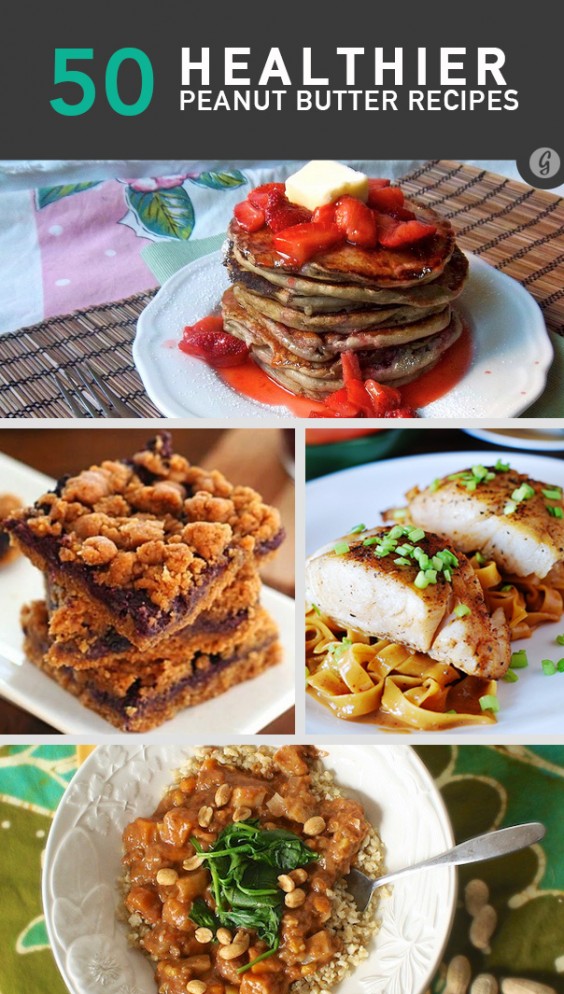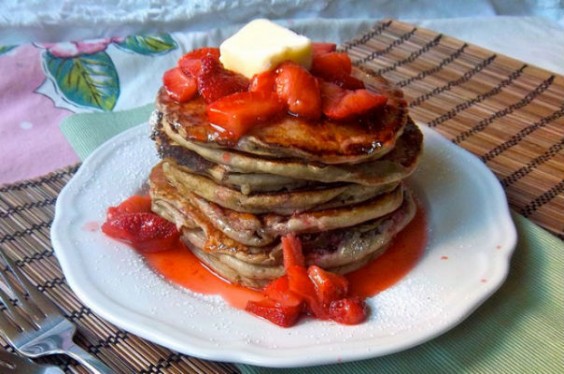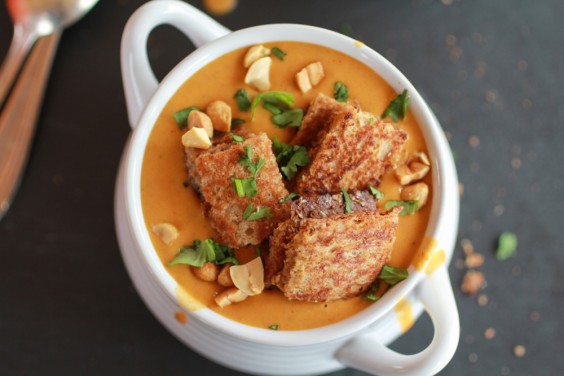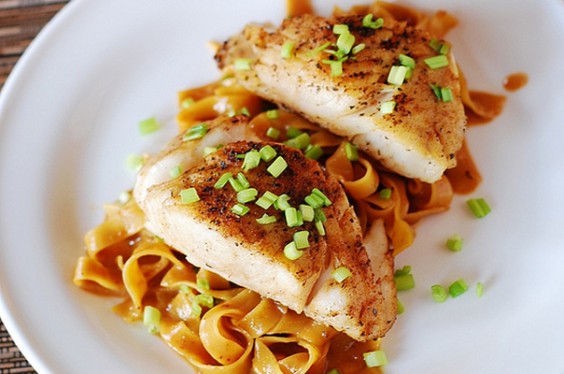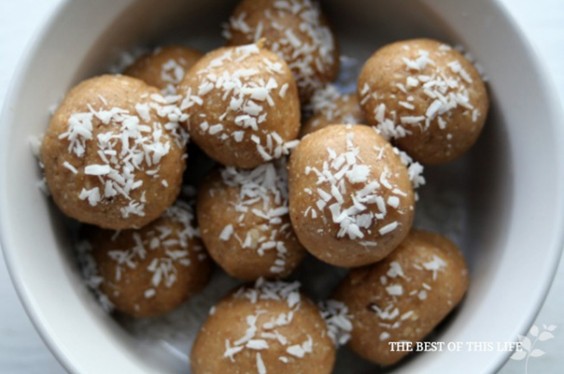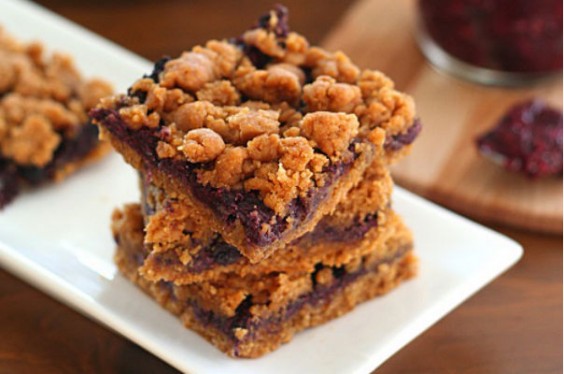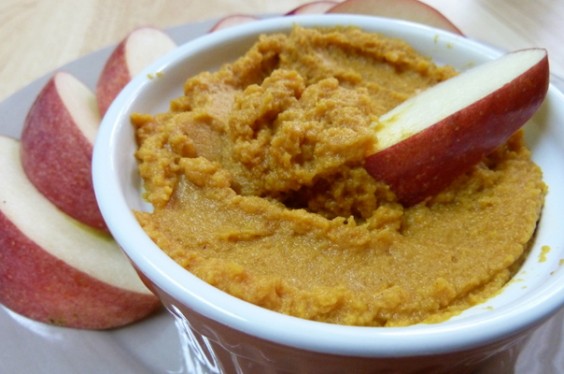eanut butter is delicious,
high in protein, and full of fiber, but like most nut products, it’s also super high in calories — so
the real danger is the fact that it's so darn hard to eat just one serving! The tasty spread often gets a bad rap since many peanut butter recipes are loaded with sugar and vegetable oils that are no friend to the waistline. But don’t worry —
we’ve put together the be all, end all list of healthier peanut butter recipes that go easy on the empty calories.
For the healthiest possible nut butter, try to
pick a brand without any added sugar, salt, or oil (look for varieties where the sole ingredient is peanuts). For the millions of people with peanut allergies, most of these recipes will work fine with a
peanut butter alternative made from nuts or seeds. Grab a jar and mixing bowl and get ready to go to peanut butter heaven!
BREAKFAST
1. Peanut Butter-Apple Breakfast QuinoaQuinoa just might be the perfect breakfast food. It’s high in fiber, carbohydrates, and protein, and is versatile enough to be used in sweet or savory dishes. This recipe combines quinoa with the classic duo of apples and peanut butter to make a breakfast that’s delicious, filling, and healthy.
2. Oatmeal Blueberry Breakfast Cookie“Cookie” is a little misleading, since this breakfast treat is actually made from oat flour, cinnamon, applesauce, flax, and vanilla. But top it with Greek yogurt, peanut butter, and fruit, and you’ve got an amazing, healthy breakfast that tastes just like dessert.
Photo:
Peanut Butter & Peppers
3. Peanut Butter Breakfast ParfaitParfaits are a great way to make yogurt, berries, and granola look and taste like a dessert. With this yummy (and gorgeous) recipe in your back pocket, you’ll never be tempted to skip breakfast again.
4. Peanut Butter, Strawberry, and Banana QuesadillasOkay, there’s no cheese, but the peanut butter turns these tortillas into a decadent breakfast treat that’s about as healthy as quesadillas can get. Don’t forget the
cinnamon — it’s packed with antioxidants and is virtually calorie-free.
5. Chocolate Peanut Butter Overnight OatsThrow some almond milk, chia seeds, oats, and cocoa powder in the fridge and leave it overnight. Wake up, add peanut butter, and enjoy — simple as that!
6. Peanut Butter Banana MuffinsFew foods go together as well as peanut butter and banana. This recipe throws them together with a healthy serving of Greek yogurt, making for a sweet, creamy, and nutty muffin that hits all the right notes.
Photo: Cat Bowen /
Breakfast to Bed
7. Peanut Butter and Jelly PancakesThough this recipe uses PB2 Powdered Peanut Butter, it still deserves a top spot on our list — these pancakes are made from an amazingly nutritious mixture of coconut milk, chia seeds and Greek yogurt. All the healthy fats in the batter make for a rich (but healthy) breakfast that’s perfect for lazy weekend mornings.
LUNCH AND DINNER
8. African Peanut Stew with QuinoaHere’s a stew that packs a serious protein punch. Mixing quinoa, lentils, and peanut butter, this vegan main has a long list of ingredients, but it’s fairly simple to whip up.
9. Vegan Lettuce Wraps with Peanut Dipping SauceSubstituting tortillas for lettuce leaves is an simple, cheap, and healthy way to lower the carbohydrate content of a traditional "wrap." While the wraps themselves are easy (and raw), the sauce requires a blender (or a strong stirring arm) to combine the coconut milk, ginger, garlic, soy sauce, and peanut butter. It’s totally worth the effort.
10. Peanut Butter Chicken ChiliPeanut butter in chili? Heck yes. This recipe goes a step further than regular turkey chili by adding a hefty dollop of peanut butter to a one-hour simmer. The result is a rare, spicy-yet-creamy taste that makes this stew absolutely unique.
Photo: Tieghan Gerard /
Half Baked Harvest
11. Thai Peanut Soup with Grilled Peanut Butter CroutonsHalf sandwich, half soup, this brilliant dish brings coconut curry and peanut butter together for the ultimate creamy, filling soups. The roasted sweet potatoes also add fiber and a layer of sweetness to this hearty meal.
12. Indonesian Pork TenderloinWe’ve never had pork like this. The peanut butter in this meaty main dish is combined with apricots, orange juice, and spices to make a flavorful marinade that eventually doubles as a sauce for drizzling. Indonesian food isn't quite as popular as some other Asian fare, but this meal has officially converted us.
13. Beef and Cabbage Stir-Fry with Peanut SauceThis stir-fry is a great way to load up on protein, vegetables, and healthy fats, all in one dish. The simple sauce combines orange juice, vinegar, soy sauce, garlic, and peanut butter for a surprisingly refreshing flavor that's much lighter than it sounds.
14. Peanut Butter Chicken MoleExactly what constitutes a Mexican mole sauce can vary pretty widely, but this innovative version mixes cocoa, cloves, and cumin for an earthy, fragrant sauce that really benefits from the addition of peanut butter.
16. Chicken and Peanut Butter Lettuce WrapThis simple yet compelling meal deftly mixes apples, grapes, chicken, and peanut butter to create a low-carb wrap that works great as a light lunch or afternoon snack.
Photo:
Julia’s Album
17. Asian Fish and Peanut Sauce NoodlesIt sounds strange, but everybody should try the awesomeness that is peanut butter and fish. Counterintuitive, sure, but this dish works so well that it’s sure to become a staple. The recipe calls for almost half a cup of sugar among four servings, but feel free to cut it back for a more savory dinner.
DESSERTS
19. Frozen Chocolate Peanut Butter Greek Yogurt PopsHere’s some frozen yogurt that’s actually healthy — blend Greek yogurt, peanut butter, honey, banana, and vanilla extract and pour the mixture into a plastic cup. Freeze, top with melted chocolate and peanut butter, and enjoy this spectacular dessert.
20. Peanut Butter Protein FudgeYep, even fudge can be healthy with the right recipe. This one combines oats, honey, protein powder, and peanut butter to make a simple, delicious “fudge” that’s practically a health food.
21. Chocolate and Avocado Peanut Butter PuddingDid you know you can make healthy desserts from
avocados? The green fruits are full of fiber, vitamins, and enough healthy fats to add a rich, creamy dimension to just about anything. This unforgettable pudding is easy to put together and even easier to eat.
Photo: Emily Smith /
The Best of This Life
22. Peanut Butter Coconut BitesCoconut is a great way to make a smooth, decadent dessert that packs a lot more nutrition than regular old butter or cream. Combine coconut with peanut butter and chia seeds, and you’ve got an amazing source of essential oils and omega-3s (and it’s pretty darn tasty, too).
23. Peanut Butter Banana “Ice Cream”There’s nothing to this two-ingredient “ice cream” — blend two frozen bananas and a tablespoon of peanut butter, and enjoy! Sometimes, the best things in life are the simplest.
24. Healthy Peanut Butter CupsReese’s ain’t got nothin’ on these. Possibly the world’s best use for mini muffin tins, these treats combine cocoa powder, coconut, cinnamon, and just a little Stevia to make one of the best healthy candy makeovers we’ve ever seen.
25. Peanut Butter, Maple, and Strawberry SliceThis one-of-a-kind recipe contains no sugar and is instead sweetened with pineapple, strawberries, apple butter, and a bit of maple syrup. The mint leaves add an extra refreshing layer to this crumbly, fruity, nutty concoction that’s perfect with an afternoon cup of tea or coffee.
Photo: Cristal Sczebel /
Nutritionist in the Kitch
27. Healthy Peanut Butter Ice CreamIce cream made from
cauliflower? This (very) unconventional recipe requires an ice cream maker, but that’s
not completely necessary for patient chefs. We recommend using full-fat Greek yogurt to make this genre-bending dish taste a little richer.
28. Grain-Free Peanut Butter Cookie Dough BitesThe secret ingredient in these gluten-free cookies is chickpeas. The legumes actually make for a fibrous and incredibly filling substitute for flour, while the peanut butter and honey bind the whole shebang together.
29. Peanut Butter Pumpkin Coffee CakePart
pumpkin, part peanut butter, all awesome, this is the perfect cake to serve when friends are over for a cup of coffee. This sugar-free loaf does contain a single teaspoon of Stevia, but feel free to leave it out — the rich, bold flavors require no extra sweetening.
30. No Bake Peanut Butter Twix BarsThese imitation Twix bars contain “shortbread” made from cashews, “caramel” made from dates, and chocolate made from… well, chocolate. But it’s
dark chocolate, so it’s super healthy, right? These raw desserts require a bit of patience and preparation, but they’ll surprise and delight anyone they’re served to. If you don’t eat them all yourself, that is!
Photo:
Real Food Real Deals
31. Chocolate Nut BarkNuts, oil, cocoa, and peanut butter are just about all that’s needed to make a flavorful, healthy dessert. These squares are grain free, no-bake, and sweetened with just a bit of honey — a gold star Paleo dessert if we’ve ever seen one!
32. Flourless chocolate chip zucchini browniesZucchini is a terrific way to add denseness and moisture to baked goods without all the calories of butter and eggs. Applesauce and oats also come to the table to create a gluten-free, vegan, and completely addictive brownie that will definitely become a post-dinner mainstay.
34. Chocolate and Peanut Butter DonutsHealthy donuts? Yep, these baked-not-fried treats contain no refined sugar and are instead sweetened by rice malt syrup and applesauce. The peanut butter is used to make a fructose-free glaze that manages to bring PB and chocolate together without tons of sugar. Get on it!
SNACKS AND SPREADS
Photo: Carolyn Ketchum /
All Day I Dream About Food
35. Peanut Butter and Jelly Low-Carb BarsNothing makes us nostalgic quite like peanut butter and jelly, and this recipe manages to revamp the classic combo in snack form. Drawing on almond flour, coconut oil, raspberries, and chia seeds, these gluten-free bars are a surprisingly healthy treat.
36. Spicy Peanut Butter and Onion BreadFor a more savory snack, this bread recipe combines onion, herbs, chili, and peanut butter. The result is the perfect base for building a grilled cheese or a fried egg sandwich — we dare you to try it!
37. Peanut Butter and Jelly SmoothieWith no added sugar, this smoothie mixes berries, dates, vanilla, and peanut butter for a liquified version of everyone’s favorite childhood sandwich. We recommend sneaking in a little spinach, too — it adds extra nutrients and is impossible to taste.
38. Peanut Butter Greek Yogurt FrostingThis sugar-free “frosting” really levels up your peanut butter and goes great on just about anything sweet. Try it on top of the chocolate muffins on the recipe's website or spread on toast for an afternoon snack.
39. Peanut Butter Trail Mix BarsThese wheat-free bars are jam-packed with almonds, sunflower seeds, peanut butter, flax, and dried fruit. All of these ingredients make them really high in calories, but they’re a great
source of energy for outdoor activities.
40. Pumpkin Pie Energy BitesWith no added sugar and no baking, these pumpkin-packed balls are an easy way to enjoy our favorite Thanksgiving pie any day of they year. They’re a lot healthier than the real deal, and they carry a solid nutritional boost from the flaxmeal and oats.
Photo:
Attune Foods
41. Easy Peanut Butter Popcorn BallsPopcorn is the unsung hero of post-workout snacks, chock full of protein, carbohydrates, and antioxidants. Though this recipe adds a few more calories via peanut butter, honey, and dried fruit, the per serve calorie count remains surprisingly low.
43. Cinnamon Raisin Chia Seed Peanut ButterHomemade nut butter makes a great gift or special treat. This recipe uses coconut oil, raisins, and ground chia seeds to make a mixture that will probably be eaten before it makes it into the jar. Good luck!
44. Raw Cranberry Chia Energy BarsDates, goji berries, and cranberries come together to make energy bars with a taste reminiscent of a peanut butter and jelly sandwich. The calorie-dense dried fruit and nuts make these bars a great snack for an afternoon of hiking or another outdoor adventure.
45. Peanut Butter Banana SpiralsSweetened only with orange juice and banana, these healthy snacks are made by rolling up whole-wheat tortillas. The recipe calls for honey-crunch wheat germ, but the regular kind is ideal for those looking to cut back on sugar.
Photo:
Cookin' Cowgirl
46. Pumpkin Peanut Butter DipGot some extra apples? This tasty goo, made from
canned pumpkin, peanut butter, pumpkin pie spice, and almond milk, makes for the perfect dip. It’s also great with bananas, carrots, or simply spread on a Graham cracker.
47. Peanut Butter Banana Protein BarsHere’s a reminder that protein powder can be used for cooking, as well as post-workout shakes. The simple, healthy ingredients make for a cheap and tasty snack that’s ideal to eat right after a tough exercise session.
48. No-Bake Peanut Butter BallsNo oven, no problem! These crunchy balls of Rice Krispies and coconut are bolstered by the tangy apple cider and cinnamon, making for a unique, Fall-themed snack that’s great for any occasion.
49. Peanut Butter Ricotta SpreadThis recipe suggests using a food processor to create the creamy, smooth peanut butter spread from scratch. Simply throw peanuts, ricotta, cinnamon, milk, and vanilla into a blender or food processor for the perfect addition to waffles, toast, or fruit.
50. Peanut Butter HummusThis protein-packed hummus contains a few surprising ingredients, like soy sauce, Sriracha, lemon, and cumin, but the result will please young and old alike: a creamy, savory dip with just a hint of peanuts that’s a great dip for vegetables or pita.

